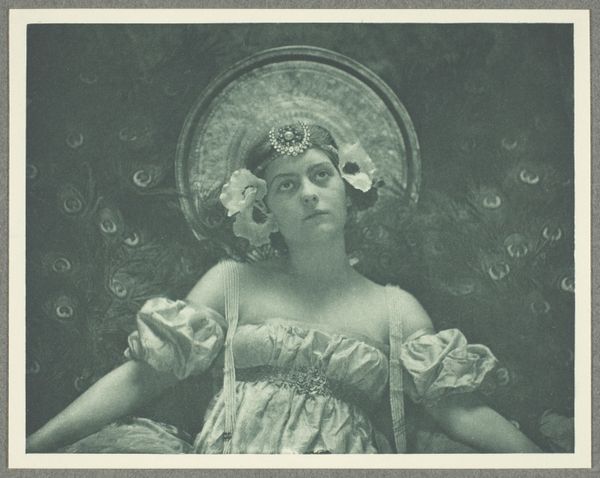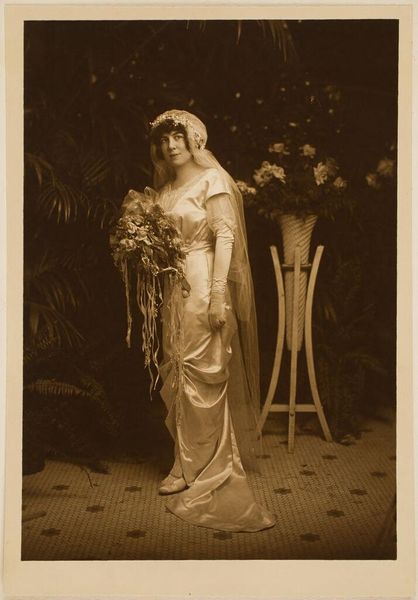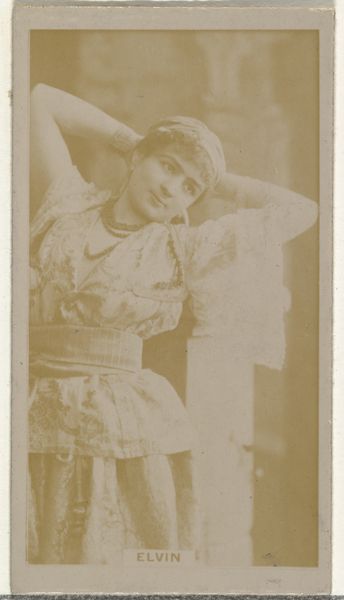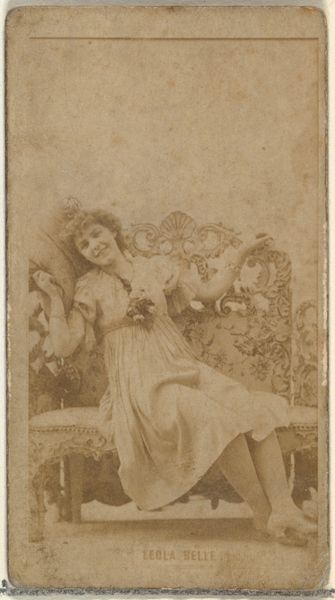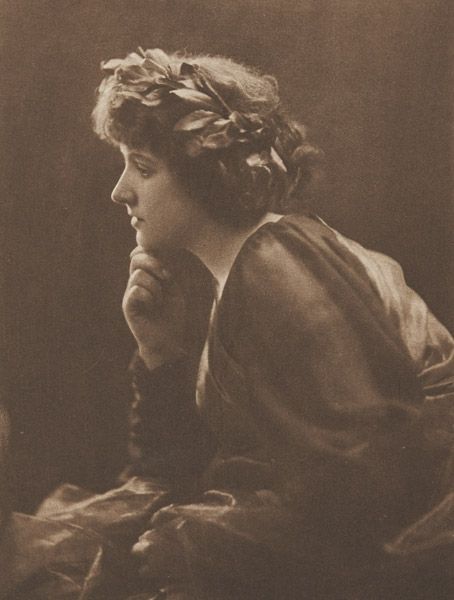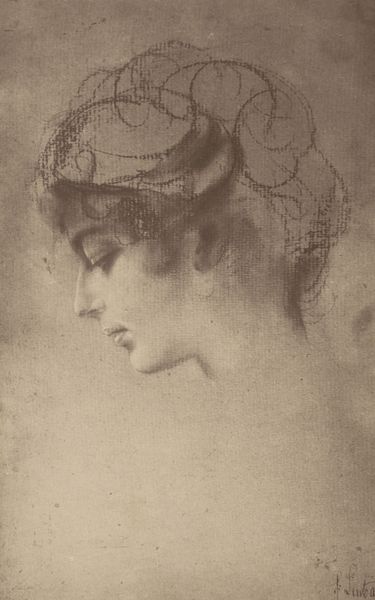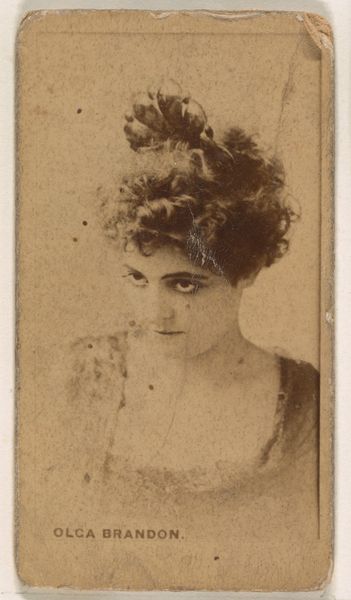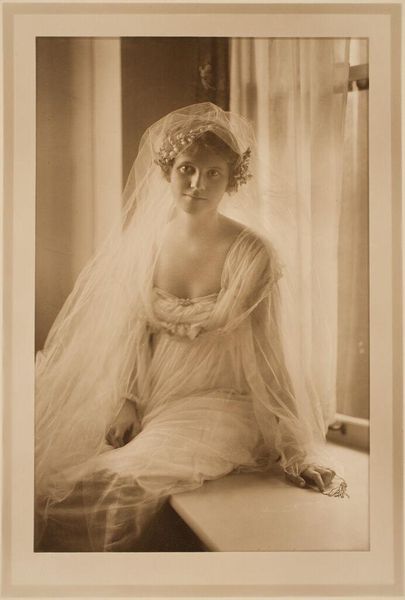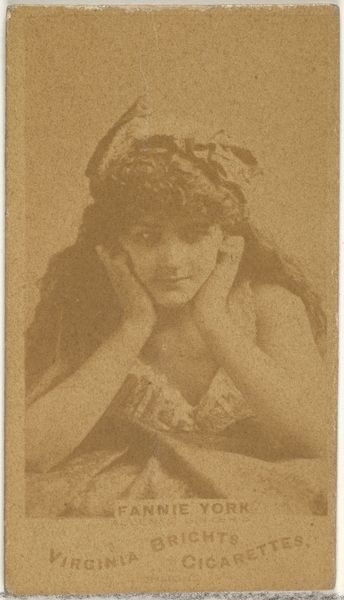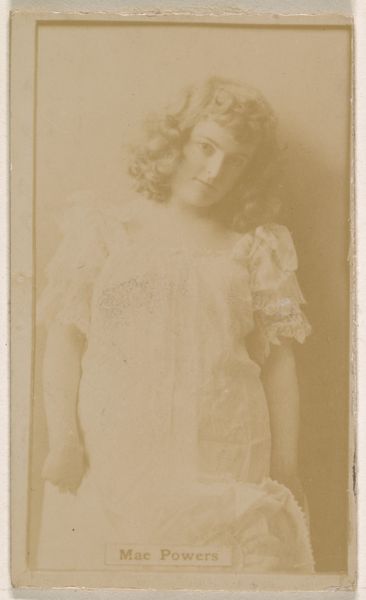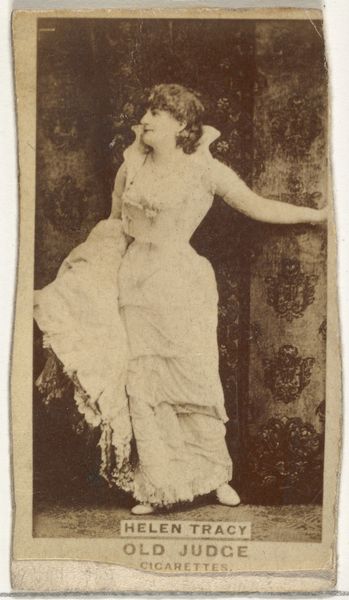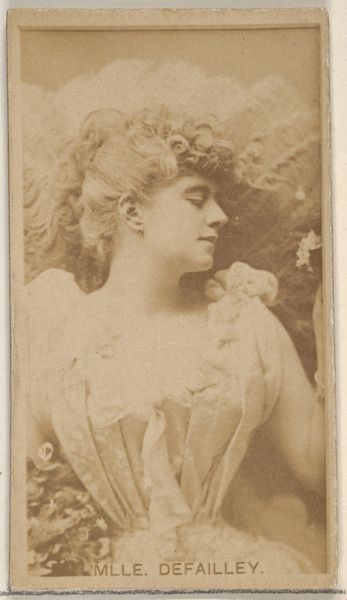
print, photography
#
portrait
#
art-nouveau
# print
#
photography
#
symbolism
Dimensions: image: 11.4 x 14.5 cm (4 1/2 x 5 11/16 in.) sheet: 12.1 x 15.2 cm (4 3/4 x 6 in.) mount: 37.9 x 27.9 cm (14 15/16 x 11 in.)
Copyright: National Gallery of Art: CC0 1.0
Curator: This photograph is titled "La Cigale," meaning "The Cicada," and was created in 1899 by Emma Justine Farnsworth. Editor: There's a striking melancholy here. The model’s gaze is averted, her expression distant. It evokes a feeling of longing or perhaps even weariness. Curator: Farnsworth was deeply involved with Pictorialism, so this image operates within a matrix of Art Nouveau and Symbolist sensibilities that were shaping visual culture at the fin de siècle. We should note the ways that women photographers like Farnsworth used allegory and personification in the photographic arts at this time. The cicada itself holds diverse meanings… Editor: Indeed, the cicada's symbolism is potent! In Western art, it’s often associated with music and poetry but can also symbolize frivolity or ephemeral existence. Considering that context, the peacock feathers create an interesting tension in the background. Curator: Exactly. Peacock feathers represent vanity and pride but in other settings may stand for immortality, themes running together in different contexts. Her elaborate dress and adornments contrast with the fleeting life cycle of the cicada. I think it speaks to complex, and even contradictory, cultural expectations placed on women in that era. Editor: Looking at the arrangement of the objects within the frame, I am fascinated with the possible connection of the halo shaped headdress that mimics both a halo in religious paintings, while being at the same time connected with the large plate right behind it that gives an odd, slightly ironic presentation. Curator: I think so, yes. It reminds us that she, the artist, and even the artwork are always operating within a framework of references that might elevate them while it threatens to ridicule or contain them at once. It pushes us to wonder about her status. Editor: Ultimately, "La Cigale" remains an enigma, open to interpretation. But in looking at it now, it makes me wonder how we keep finding and losing the old meanings embedded in it through images. Curator: Absolutely. For me, its enduring appeal is that it prompts us to question the roles women occupied – and continue to navigate – within complex societal frameworks.
Comments
No comments
Be the first to comment and join the conversation on the ultimate creative platform.
